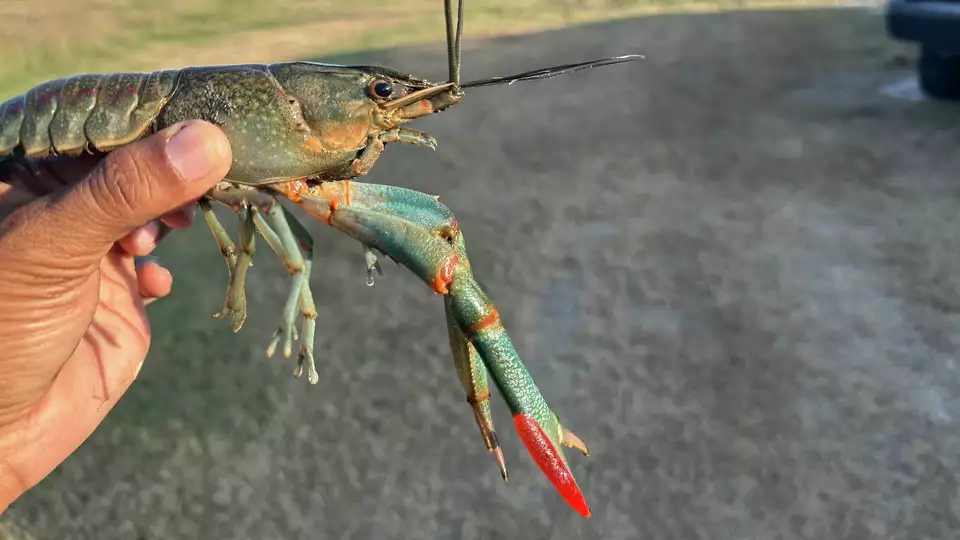Time to meet another invasive species.
The South Texas odyssey of the Australian redclaw crayfish continues. Approaching five years since the lobster-like creatures were first reported in the Brownsville area, scientists are still trying to determine how disruptive this visitor from halfway around the world really is.
Maybe it’s the word “invasive,” but the redclaws tend to be painted in the media as some sort of boogeyman hell-bent on usurping their smaller native counterpart (the “red swamp” crawfish) like something out of a 1950s B-movie. But like the redclaws’ favored habitat of the Valley’s recetas (wetlands) and ponds, the truth is somewhat murkier.
For one thing, evidence suggests the redclaws are either unwilling or unable to thrive anywhere water temperatures dip much below 80 degrees. That could substantially limit their range, said Dr. Archis Grubh, an invertebrate biologist with Texas Parks and Wildlife’s inland fisheries division.
“If it gets cold then [the redclaw] cannot survive, or it’s not favorable for it,” said.
Last year about this time, Grubh and his team had just begun a two-year study of the Australian redclaws in collaboration with researchers from the University of Texas at Tyler. Focusing on a 30-mile radius around Brownsville, their early efforts have concentrated on measuring the animals’ range and “abundance,” or the number of redclaws recovered in their nets and minnow traps.
Now, halfway through the study, Grubh said researchers had found redclaws as far as Los Fresnos, about 17 miles north of Brownsville. They had also surprised themselves by recovering between 40 and 50 redclaws during their November research trip. Previous outings had only recovered a handful at a time, so Grubh still wasn’t quite sure what accounted for the significant jump in numbers.
“Maybe it’s a seasonal effect; maybe they’re hiding or going to different habitat areas,” he said. “They still have two more samplings that will be conducted in the next few months. After that, we’ll have a stronger hold on what’s going on.”
Other aspects of the redclaws’ impact on their environment, such as how their healthy appetite for decaying vegetation and other organic matter affects other species in the area, also have yet to be studied.
“I’d definitely like to see if there is some behavioral interaction between the Redclaw and the native crayfish species, or even with other fish, to see how it’s affected them,” Grubh said. “We’d like to get an idea of its abundance. Right now we’re just trying to figure out how far this species has spread, but we’d like to know how dense these numbers are.”
I’ve mentioned these critters before. Not discussed in this story: whether or not they’re good eatin’. As noted in my first entry, the answer to that is Yes. The likely manner in which this Aussie animal wound up in South Texas is some number of people dumping their aquariums in the Gulf. This is why we can’t have nice things. Be that as it may, at least this invasive species appears to be somewhat limited in its ability to disrupt the natives; we didn’t have a good handle on that in 2022, when we were first becoming aware of them. Let’s hope that further study confirms that. It would also be nice if they could clarify whether these things should have “crawfish” or “crayfish” as part of their official names.

